WHAT YOU SHOULD KNOW ABOUT WILDLIFE REMOVAL
First and foremost, this site is dedicated to animal safety and conservation. Extermination is our last resort; we do not support killing or injuring snakes or any other wildlife, in fact majority of snake bites are a result of people trying to kill the snakes. Many people attempt to kill animals like snakes or reptiles, but some professionals can safely remove them from your property. We strongly advocate for humane solutions and do not endorse harming snakes, reptiles, or other animals when alternative methods are available.
Wildlife is undeniably adorable, but it can also pose significant risks to your home, causing safety and health concerns as well as extensive damage to your valuables. This is why wildlife removal is often necessary.
Wildlife removal typically involves eliminating nuisance animals through methods such as traps, toxins, and, unfortunately, poisons. However, we prioritize humane and natural solutions to remove these creatures while ensuring the safety of your family, pets, and the wildlife itself.
Why do People Exterminate Wildlife?
It is common for people to be threatened by unwanted visitors such as Snakes, Racoons, rodents etc. Wildlife can be responsible for many destructive and safety threat to your family and pets. These threats can be as follows below:
- They create encourage other pests i.e. snakes coming to chase the rates.
- They can damage your house, rates gnawing plaster straps holding up roof structure.
- They can eat through plaster board or panelling, nesting in insulations, rats are notorious for this.
- They can die in those nooks and crannys which can be hidden,creating foul smells and hard to find the carcus. This is definitely a down side to toxic baits.
- They make noises around your property, especially if they are noturnal and are in your roof, possums are notorious for this., banging and crashing at night can keep you awake all night,
- They scavenge refuse and leave droppings behind keeping the environment dirty. Rats, possums eat and use your roo as a toilet bowl, It ends up smelling and can stain the roof over a period of time.
- They are dangerous to both humans and pets. Snaks will enter the roof to prey on rats and and possums. Venomous and non vernomous snakes can be dangerous to the family, if they came face to face with pets they might bite them or even try to make a meal of them. There is plenty of examples when Pythons have come into a home chasing prey and end up attacking cats or small dogs.
What to Look Out For Before Wildlife Extermination
Below is a list of things you should look out for before
Accidents: Although you might think you might have a good idea of eliminating or exterminating a snake or other wildlife, it doesnt mean it is a good idea, if the idea has a possibility of an accidnt then it should not be used. Some methods are very hazardous and illegal, killing snakes and certain wildlife in some countries are illegal, it can lead to injury and loss of lives, more people die from snake bites through trying to kill it, employ the help of a professional wildlife removalist.
Animal control: Make sure you carefully evaluate your removal method before administrating it. Consider all the all the legal and ethical backing to carry out whatever action you wish to, on the animal. Remember that a lot of species are protected in a lot of countries so this need to be considered along with safety to yourself and the animal.
Determine the animal Species: When controlling wildlife, identifying the particular animal or animals responsible for the damage to your property is a very important step. This will ensure that you use the right method that matches the animal species to control them effectively.
Change the habitat: Once you have had the threat removed, you should consider changing your property arrangement. By changing the environment can discourage the animals from habituating there again, the snake, racoon, Gofer will not feel saf or the feeding source is no long there and no longer provides a place for the aminal to stay. How often do you see a property with long grass or out of control gardens providing a haven and refuge for snakes or other creatures like rates, which will attract snakes. Clean up the garden can discourag the snake.
Common Wildlife Control Methods
With the different typs of methods, you must consider the safety of your property and everyone on it. Here, we have outlined wildlife control methods that are not only effective but will also maximize safety around.
Toxic baits
The use of toxic baits is a quite a common choice for critter controll. This method is effective. It consists of a pleasantly smell bait, e.g. a source of food the species would feed of, poisoned wheat or stock feed for rates, poisoned fruit for possums or racoons. This poisonous substance is usually chemical based and has a smell that attracts the intended pest. This is an effective method however we do discourgage this and opt for a more humane method.
How to use
- Identify the wildlife causing the problem and decide the bait best suited.
- Include the poisonous substance into the bait and place it in spaces with high wildlife activity.
- Dispose of the dead animal approprietly far away from the house, if a pet picks up the dead animal, they might also become subject to the poison, this is why we recommend a more humane method.
- Always store the substances in a safe place and away from any of the family members including children, pets, or fire. Too often the poisons get into the wrong hands.
Glue boards
Glue boards, unlike toxic baits, give a choice of life for the animal. It is a nontoxic way of controlling wildlife. If you are not quite interested in killing the animal, you may consider using this method. This is much more humane.
How to use
- Place the large surface containing glue in the area that is suspected of wildlife activity.
- Animals that come in contact with the board get stuck to it and can either be rescued or die due to suffocation, checking the baits need to be more frequent to ensure rescue.
Frightening snake repellent devices
Animals are generally wary of new sounds or lights in their environment and will flee if they encounter any. This is the principle that this method works on. However, the ability of the animal to react to this method varies greatly, hence there is criticism if these devices’ work. For these to work we need to understand what animal we are trying to deter is concerned and the best approach to eradicating them. If you are looking for a great raccoon removal or squirrel prevention method, this is a good choice.
How to use
- Place the device in an area prone to wildlife activity. Examples of this device include Ultrasonic repellent, wireless fence posts, etc.
- When an animal comes within that area, the device gives a response that scares the animal away.
How to Modify Your Habitat to Deter Wildlife
If your goal is to relocate wildlife without harming them, this method is ideal for you. By altering the environment, you can make it less appealing for wildlife to settle. Here’s how you can change the habitat to discourage wildlife from finding solace in your surroundings.
- Landscaping Adjustments: Remove dense vegetation and trim overgrown areas to eliminate hiding spots.
- Remove Food Sources: Secure garbage bins, eliminate bird feeders, and clean up fallen fruits or nuts.
- Water Management: Fix leaks and avoid standing water to prevent wildlife from using your area as a water source.
- Physical Barriers: Install fences or barriers to restrict access to your property.
- Natural Repellents: Use plants or substances that naturally repel wildlife.
By implementing these changes, you can create an environment that encourages wildlife to move on to a more suitable habitat, promoting a peaceful coexistence with nature.
Wildlife Traps
Using traps can effectively aid wildlife control. There are two major types of traps, the quick kill-type traps and the live-holding traps. Most people do not prefer this method because of the threat it poses to pets and humans around them. Ensure you take extreme caution when using this method. This method is a good option for rat control, raccoon control, groundhog control, squirrel control, and other crawling wildlife species.
Animal Repellent
Whether you are looking at snake removal, critter removal, bat control, squirrel control, etc., using animal repellent is a great way to resolve your wildlife conflict. Determine what repellent works best for the wildlife before taking any action.
There is various animal repellent available. They include:
- Liquid repellents
- Granular repellents
- Covered repelling station
- Electronic repellents
Although these steps are available for wildlife removal and extermination, we promote using professional wildlife removalists who can help you resolve your wildlife conflict.
REFERENCES AND WHERE YOU CAN LEARN MORE
- How to Repel a Wild Animal
- Wildlife Control: Wildlife extermination and Removal
- Nuisance wildlife management – Wikipedia
en.m.wikipedia.org

Jennifer Mornard is the owner of a backyard farm in Calaveras County. She keeps her garden pest-free by using organic and inorganic methods and keeping it clean. She also tests pest control products to keep snakes, gophers, and other pests away.
Jennifer has worked and study reptiles around the globe including Africa, Asia, Australia and in the open prairies, grasslands deserts in USA. It is her mission to provide a solution for reptiles, manly snakes, and human beings to co-exist. Her goal is to educate people so they can prevent the unpleasant experience of snakes and humans crossing paths in people homes and properties.


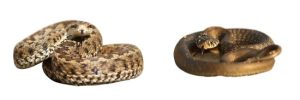 How to Tell if a Snake is Poisonous
How to Tell if a Snake is Poisonous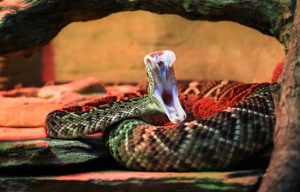 pattern. Found in the Southeastern US, Eastern Louisiana, Southern Mississippi, coastal plains of North Carolina and in Florida. It is a thick set snake and can get to 8 feet long and over 30 pounds. They are considered to be the most venomous snake in US but they move a bit slow in comparison to other snakes due to their thick body. Of course they are a rattlesnake and are identified by the diamond patterns running along its back. It also has black band covering its eyes. Another distinction is it has cat eye pupils and a large pit between the nostrils. They can be black, brown with cream diamonds or even yellow.
pattern. Found in the Southeastern US, Eastern Louisiana, Southern Mississippi, coastal plains of North Carolina and in Florida. It is a thick set snake and can get to 8 feet long and over 30 pounds. They are considered to be the most venomous snake in US but they move a bit slow in comparison to other snakes due to their thick body. Of course they are a rattlesnake and are identified by the diamond patterns running along its back. It also has black band covering its eyes. Another distinction is it has cat eye pupils and a large pit between the nostrils. They can be black, brown with cream diamonds or even yellow.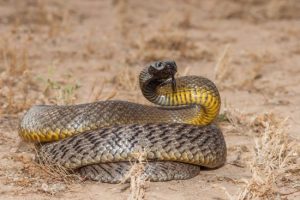 nland Taipan: Also known as the “fierce snake,” it has the most toxic venom of any snake in the world. This snake is a medium to large snake a broad build and a deep rectangular-shaped head. Their colors range from pale fawn to yellowish – brown to dark brown. The head and the neck is usually darker than the body.
nland Taipan: Also known as the “fierce snake,” it has the most toxic venom of any snake in the world. This snake is a medium to large snake a broad build and a deep rectangular-shaped head. Their colors range from pale fawn to yellowish – brown to dark brown. The head and the neck is usually darker than the body.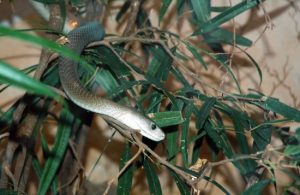 coloring can range from Gray to dark brown and the underside is lighter. The snake is not black on the outside, the black is actually inside its mouth. This snake is found in the Rocky Savannas and the lowland forest in Africa.
coloring can range from Gray to dark brown and the underside is lighter. The snake is not black on the outside, the black is actually inside its mouth. This snake is found in the Rocky Savannas and the lowland forest in Africa.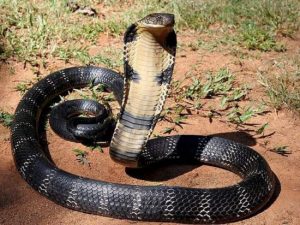 King Cobra: The world’s longest venomous snake, with a unique, intimidating appearance. The coloring is either Yellow, Green, Brown or Black with alternating chevron banding along their bodies. Their head is larger that other Cobra’s. They are generally shy and don’t bother humans but they are very poisonous. They are found They are found Western Indonesia, Philippines, Hong Kong and Southern China. They like open or dense forest, thickets,agriculture areas and mangroves.
King Cobra: The world’s longest venomous snake, with a unique, intimidating appearance. The coloring is either Yellow, Green, Brown or Black with alternating chevron banding along their bodies. Their head is larger that other Cobra’s. They are generally shy and don’t bother humans but they are very poisonous. They are found They are found Western Indonesia, Philippines, Hong Kong and Southern China. They like open or dense forest, thickets,agriculture areas and mangroves.

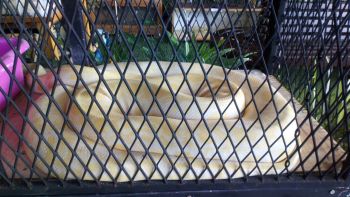
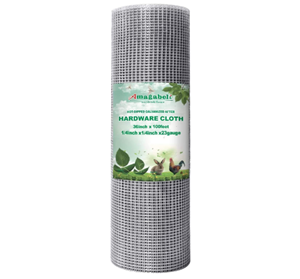
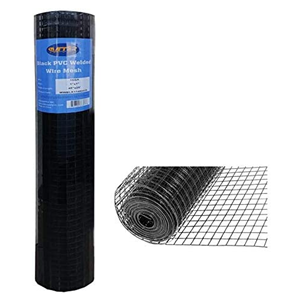
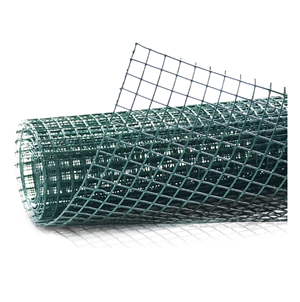
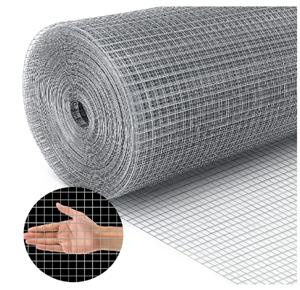
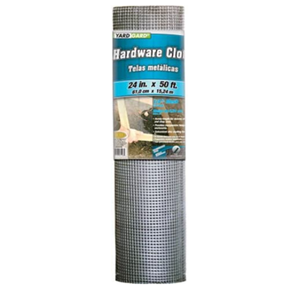
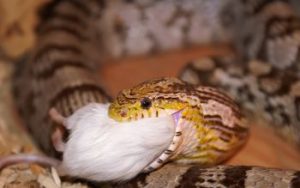 As other predators search for prey, snakes also search for rodents and other small animals to fill their appetites. A snake can also come for small cats, dogs, hamsters, rabbits, chickens, or piglets.
As other predators search for prey, snakes also search for rodents and other small animals to fill their appetites. A snake can also come for small cats, dogs, hamsters, rabbits, chickens, or piglets.  Now that you have all the necessary materials and tools let’s go through the step-by-step guide to building your DIY snake fence.
Now that you have all the necessary materials and tools let’s go through the step-by-step guide to building your DIY snake fence.
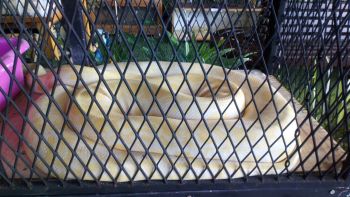
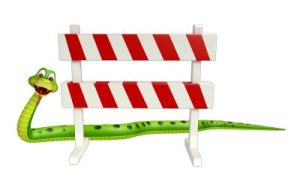 Below are a few important things to consider while constructing an effective snake fence:
Below are a few important things to consider while constructing an effective snake fence: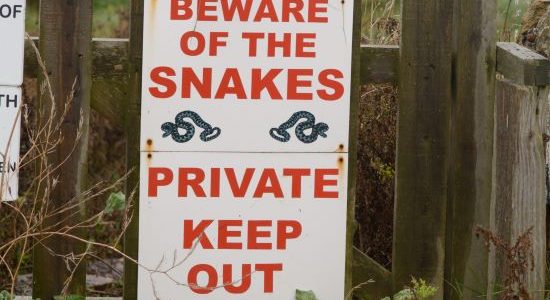


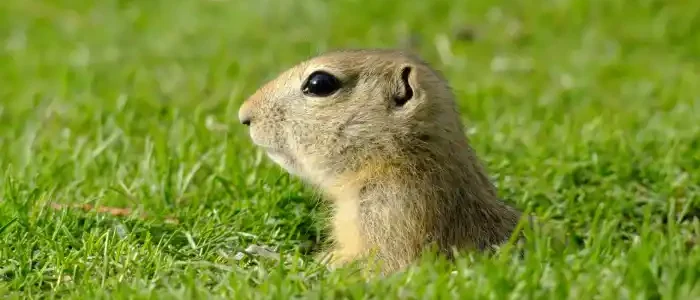
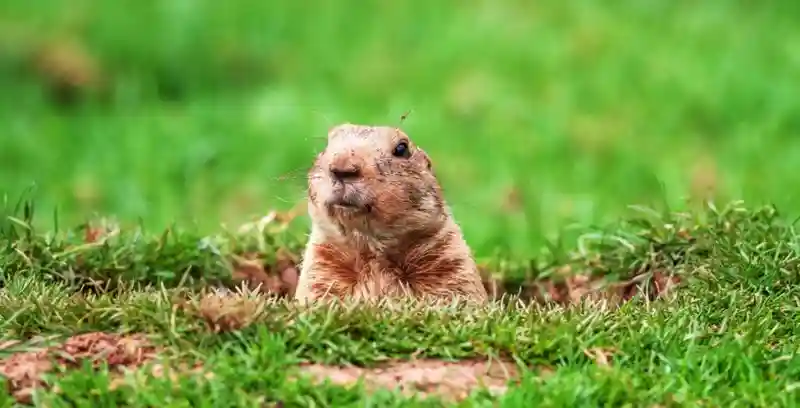 You might not find that answer so simply unless you work on it. However, there could be a few things attracting Gophers to your property. So, check below to see if you have any of them around.
You might not find that answer so simply unless you work on it. However, there could be a few things attracting Gophers to your property. So, check below to see if you have any of them around.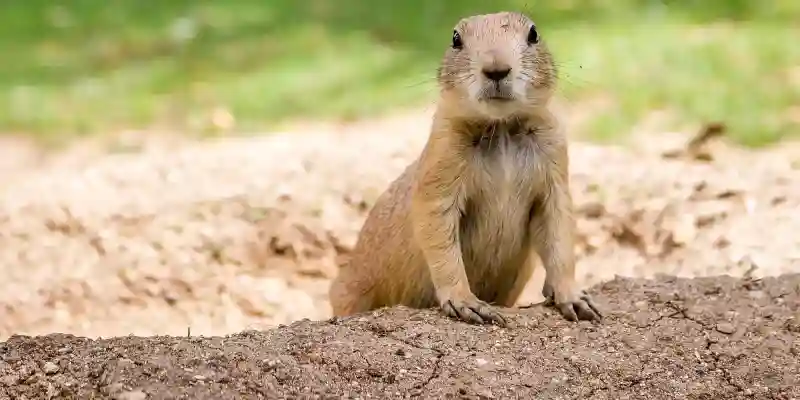 The presence of fan-shaped mounds in your lawn and garden means you have Gophers. Also, they go for the fresh vegetables and fruits you are growing and will snack on them. So, if your food is getting chew marks on them or is decreasing, it means they are there.
The presence of fan-shaped mounds in your lawn and garden means you have Gophers. Also, they go for the fresh vegetables and fruits you are growing and will snack on them. So, if your food is getting chew marks on them or is decreasing, it means they are there.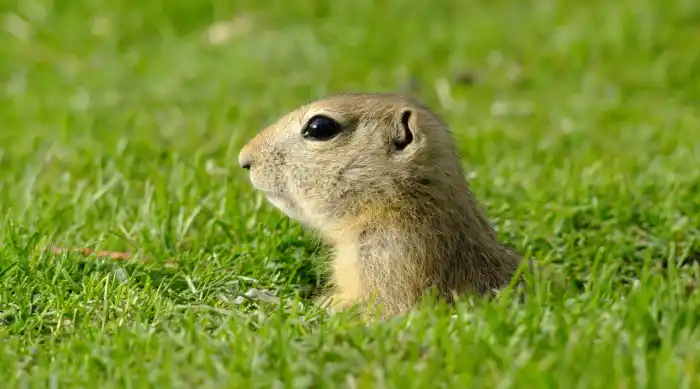 No-Kill Traps
No-Kill Traps